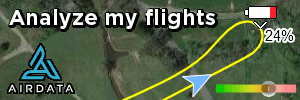I am with a fire department in Colorado, and leading the UAS program there. We started using drones for training sessions, recording video for FF training feedback. Then when folks saw how useful the aerial perspective was, I say 'well you know we could....'. That got the program moving forward. Now we use it for aerial recon in structure, wildland, and SAR missions. Along with continued training video/enhancements.
In June 2017 myself and two other FF from neighboring departments flew UAS aerial recon on wildires in NM. Great experience, a Type 3 incident gave a lot of freedom to experiment and help Operations see what was useful, or not. We wrote a lessons-learned paper.
UAS Notes & Lessons from the June 2017 Luera TREX
In Sept I deployed to wildfires in OR and worked for the Alaska Type 1 team there. They were very dialed in with operating UAS for the entire two week assignment. From the get go they had processes to get approval from agency reps, coordinate with Air Ops and Air Attack. They flew every day, multiple missions. After morning briefing they tied in with Operations and with three UAS teams, they coordinated with the Divisions to plan their missions. Since it was all in a TFR they also got approval for BVLOS. Used FLIR quite a bit. All in a a very well managed UAS operation, very encouraging to see it in action.
I had a chance to talk with these Alaska folks about their SOP/TTPs, etc. They have more UAS flight hours than all of the combined Type 1 and 2 teams in the lower 48. I've been to Alaska for wildfire assignments and yes, they do things a little different there. Its Alaska! The conservative agencies in the lower 48 are just not ready for widespread UAS implementation at this point because of inexperience and fear of blowback because of lack of solid policy and procedures, depending on which agency is managing a wildfire/incident. There are moves to change this but the Feds move slowly.



